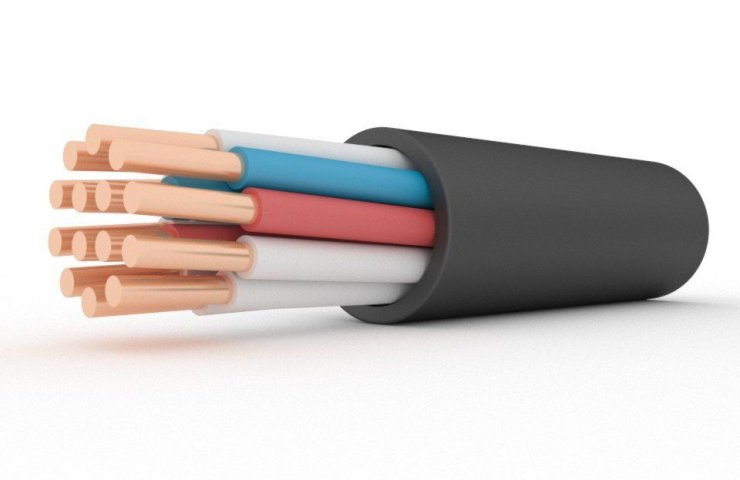Control cable KVVG is a stranded wire used in areas with difficult access. The main purpose of this cable is not to power the devices, but to transmit reliable information about the structure, location and mode of operation of electrical mechanisms, that is, to monitor them. The peculiarity of this cable product is that it allows you to provide a real connection of electrical switchgear to electrical equipment and stationary complexes.
Key Features
The cable is used in 660V and 100 Hertz AC equipment. The highest voltage for DC units is 1000V. Conductor testing is performed at 2500V. The cable is put into operation at a temperature of -50 ... + 50C. Maximum temperature - 70 C.
Attention: It is forbidden to subject the control cable KVVG to mechanical stress; during the laying process, all factors leading to stretching, vibrations, sagging must be taken into account. When these rules are observed, the service life of the cable, which is located in the tunnel, is 25 years, outdoors - 15 years. Specifications:
- Insulation thickness - 0.6-0.8 millimeters.
- Insulation resistance - 300 Ohm.
- Size range - 0.75-10 mm2.
- Length - 150 m (may vary in bays).
Wire with a cross-section of conductors up to 1.5 mm square. may have the largest number of cores - 61. With a cross section of 4-6 mm. sq. - 4-10. The total mass of the line will depend on the number and diameter of the conductors.
Scope of use
The cable is used for the installation of distribution elements, in shields, for connecting various stationary equipment. The wire is laid in tunnels and trays, if there is no risk of mechanical damage. If this condition is not met, protective mechanisms or armored cable are used.
Editing Features
Location in space during installation and operation - no restrictions. The wire is laid in racks and cable structures, for enterprises it is possible to lay it in:
- blocks, channels, tunnels, collectors;
- pipes made of PVC, cermets, asbestos cement, steel;
- shelves, trays, boxes.
The wire can be laid on brick, concrete, reinforced concrete surfaces and in the ground. In the second case, the soil in the channel must be crushed and laid on one side of the pit, and an asphalt embankment is made on the other side. The bottom is made of a sand cushion with a layer of 10 cm. Backfilling is carried out with tamping along the entire length of the ditch, an embankment is organized on top, which, during soil subsidence, will not allow the appearance of a depression on top of the highway.




